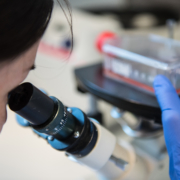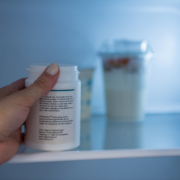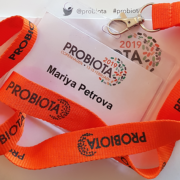By Bruno Pot, PhD, Vrije Universiteit Brussel and Mary Ellen Sanders, PhD, Executive Science Officer, ISAPP
On July 2nd, the European Food Safety Authority (EFSA) published the 12th update of the qualified presumption of safety (QPS) list, a list of safe biological agents, recommended for intentional addition to food or feed, covering notifications from October 2019-March 2020. It was good news to all stakeholders to see that EFSA discussed the recent taxonomic changes within the genus Lactobacillus (see ISAPP blog here) as well as addressed some microbes being considered as potential, novel probiotics.
What is QPS?
In 2005 EFSA established a generic approach to the safety assessment of microorganisms used in food and feed, prepared by a working group of the former Scientific Committee on Animal Nutrition, the Scientific Committee on Food and the Scientific Committee on Plants of the European Commission. This group introduced the concept of “Qualified Presumption of Safety” (QPS), which described the general safety profile of selected microorganisms. The QPS process was mainly developed to provide a generic pre‐evaluation procedure harmonized across the EU to support safety risk assessments of biological agents performed by EFSA’s scientific panels and units. A QPS assessment is performed by EFSA following a market authorisation request of a regulated product requiring a safety assessment. Importantly, in the QPS concept, a safety assessment of a defined taxonomic unit is performed independently of the legal framework under which the application is made in the course of an authorisation process.
QPS status is granted to a taxonomic unit (most commonly a species), based on reasonable evidence. A microorganism must meet the following four criteria:
1. Its taxonomic identity must be well defined.
2. The available body of knowledge must be sufficient to establish its safety.
3. The lack of pathogenic properties must be established and substantiated (safety).
4. Its intended use must be clearly described.
Any safety issues, noted as ‘qualifications’, that are identified for a species assessed under QPS must be addressed at the strain or product level. Microorganisms that are not well defined, for which some safety concerns are identified or for which it is not possible to conclude whether they pose a safety concern to humans, animals or the environment, are not considered suitable for QPS status and must undergo a full safety assessment. One generic qualification for all QPS bacterial taxonomic units is the need to establish the absence of acquired genes conferring resistance to clinically relevant antimicrobials (EFSA, 2008).
If an assessment concludes that a species does not raise safety concerns, it is granted “QPS status”. Once EFSA grants a microorganism QPS status, it is included on the “QPS list” and no microorganism belonging to that group needs to undergo a full safety assessment in the European Union.
The QPS list is re‐evaluated every 6 months by the EFSA Panel on Biological Hazards based on three “Terms of Reference” (ToR)*. This evaluation is based on an extensive literature survey covering the four criteria mentioned above.
What happened to the genus Lactobacillus?
In April 2020, based on a polyphasic approach involving whole genome sequencing of more than 260 species of the former genus Lactobacillus, the genus was reclassified into 25 genera including the emended genus Lactobacillus, which includes host-adapted organisms that have been referred to as the L. delbrueckii group, the earlier described genus Paralactobacillus as well as 23 novel genera, named Acetilactobacillus, Agrilactobacillus, Amylolactobacillus, Apilactobacillus, Bombilactobacillus, Companilactobacillus, Dellaglioa, Fructilactobacillus, Furfurilactobacillus, Holzapfelia, Lacticaseibacillus, Lactiplantibacillus, Lapidilactobacillus, Latilactobacillus, Lentilactobacillus, Levilactobacillus, Ligilactobacillus, Limosilactobacillus, Liquorilactobacillus, Loigolactobacilus, Paucilactobacillus, Schleiferilactobacillus, and Secundilactobacillus. Read more in the original paper here or on the ISAPP blog here).
These name changes could have considerable economic, scientific and regulatory consequences, as discussed during an expert workshop organised by the Lactic Acid Bacteria Industrial Platform (LABIP). One of the points discussed during this workshop was the possible implication of the name change on the QPS list in Europe and the FDA’s GRAS list in the USA.
What did EFSA do?
In a 42-page document, which can be found here, amongst others, the species of the former genus Lactobacillus that were already listed on the QPS list, have been formally renamed at the genus level. The species names remained the same, as the taxonomic revision from April 2020 only affected the genus name. As a result, the genus names of 37 former Lactobacillus species on the QPS were updated, and now span 13 different genera. Table 1 delineates these nomenclature updates.
Table 1: Taxonomic revision of the 37 species formerly of the Lactobacillus genus present on the QPS list (published here).
| Earlier denomination |
Updated denomination |
| Lactobacillus acidophilus |
Lactobacillus acidophilus |
| Lactobacillus alimentarius |
Companilactobacillus alimentarius |
| Lactobacillus amylolyticus |
Lactobacillus amylolyticus |
| Lactobacillus amylovorus |
Lactobacillus amylovorous |
| Lactobacillus animalis |
Ligilactobacillus animalis |
| Lactobacillus aviarius |
Ligilactobacillus aviarius |
| Lactobacillus brevis |
Levilactobacillus brevis |
| Lactobacillus buchneri |
Lentilactobacillus buchneri |
| Lactobacillus casei |
Lacticaseibacillus casei |
| Lactobacillus collinoides |
Secundilactobacillus collinoides |
| Lactobacillus coryniformis |
Loigolactobacillus coryniformis |
| Lactobacillus crispatus |
Lactobacillus crispatus |
| Lactobacillus curvatus |
Latilactobacillus curvatus |
| Lactobacillus delbrueckii |
Lactobacillus delbrueckii |
| Lactobacillus dextrinicus |
Lapidilactobacillus dextrinicus |
| Lactobacillus diolivorans |
Lentilactobacillus dioliovorans |
| Lactobacillus farciminis |
Companilactobacillus farciminis |
| Lactobacillus fermentum |
Limosilactobacillus fermentum |
| Lactobacillus gallinarum |
Lactobacillus gallinarum |
| Lactobacillus gasseri |
Lactobacillus gasseri |
| Lactobacillus helveticus |
Lactobacillus helveticus |
| Lactobacillus hilgardii |
Lentilactobacillus hilgardii |
| Lactobacillus johnsonii |
Lactobacillus johnsonii |
| Lactobacillus kefiranofaciens |
Lactobacillus kefiranofaciens |
| Lactobacillus kefiri |
Lentilactobacillus kefiri |
| Lactobacillus mucosae |
Limosilactobacillus mucosae |
| Lactobacillus panis |
Limosilactobacillus panis |
| Lactobacillus paracasei |
Lacticaseibacillus paracasei |
| Lactobacillus paraplantarum |
Lactiplantibacillus paraplantarum |
| Lactobacillus pentosus |
Lactiplantibacillus pentosus |
| Lactobacillus plantarum |
Lactiplantibacillus plantarum |
| Lactobacillus pontis |
Limosilactobacillus pontis |
| Lactobacillus reuteri |
Limosilactobacillus reuteri |
| Lactobacillus rhamnosus |
Lacticaseibacillus rhamnosus |
| Lactobacillus sakei |
Latilactobacillus sakei |
| Lactobacillus salivarius |
Ligilactobacillus salivarius |
| Lactobacillus sanfranciscensis |
Fructilactobacillus sanfranciscensis |
EFSA further specifies that “To maintain continuity within the QPS list, all the strains belonging to a previous designed Lactobacillus species will be transferred to the new species. Both the previous and new names will be retained”. (Emphasis added.)
Impact of the QPS update on the probiotic field
The probiotic field can also take note of this current update for its review of two ‘next generation’ probiotic species evaluated for possible QPS status, Akkermansia muciniphila and Clostridium butyricum. Akkermansia muciniphila has been actively researched as a probiotic to help manage metabolic syndrome (Depommier et al. 2019). A probiotic preparation containing both Akkermansia muciniphila and Clostridium butyricum has been studied in a randomized controlled trial for postprandial glucose control in subjects with type 2 diabetes (Perraudeau et al 2020). The committee’s decisions:
- Akkermansia muciniphila is not recommended for QPS status due to safety concerns;
- Clostridium butyricum is not recommended for QPS status because some strains contain pathogenicity factors; this species is excluded for further QPS evaluation.
The publication of the next scientific opinion updating the QPS list is planned for December 2020, based on the 6-month assessments carried out by the BIOHAZ Panel.
Conclusion
Due to its scientific rigor and continuous updates, the EFSA QPS efforts provide useful perspective for the global scientific community on safety of candidate microbes for use in foods. Their embrace of the new taxonomic status of lactobacilli signals to other stakeholders that it is time to start the process of doing the same. Further, their assessment of species being proposed and studies as ‘next generation’ probiotics is an important reminder that a microbe’s status as a human commensal is not a guarantee of its safety for use in foods.
*QPS Terms of Reference (ToR) (quoted from here):
ToR 1: Keep updated the list of biological agents being notified in the context of a technical dossier to EFSA Units such as Feed, Pesticides, Food Ingredients and Packaging (FIP) and Nutrition, for intentional use directly or as sources of food and feed additives, food enzymes and plant protection products for safety assessment.
ToR 2: Review taxonomic units previously recommended for the QPS list and their qualifications when new information has become available. The latter is based on a review of the updated literature aiming at verifying if any new safety concern has arisen that could require the removal of the taxonomic unit from the list, and to verify if the qualifications still efficiently exclude safety concerns.
ToR 3: (Re)assess the suitability of new taxonomic units notified to EFSA for their inclusion in the QPS list. These microbiological agents are notified to EFSA and requested by the Feed Unit, the FIP Unit, the Nutrition Unit or by the Pesticides Unit.









